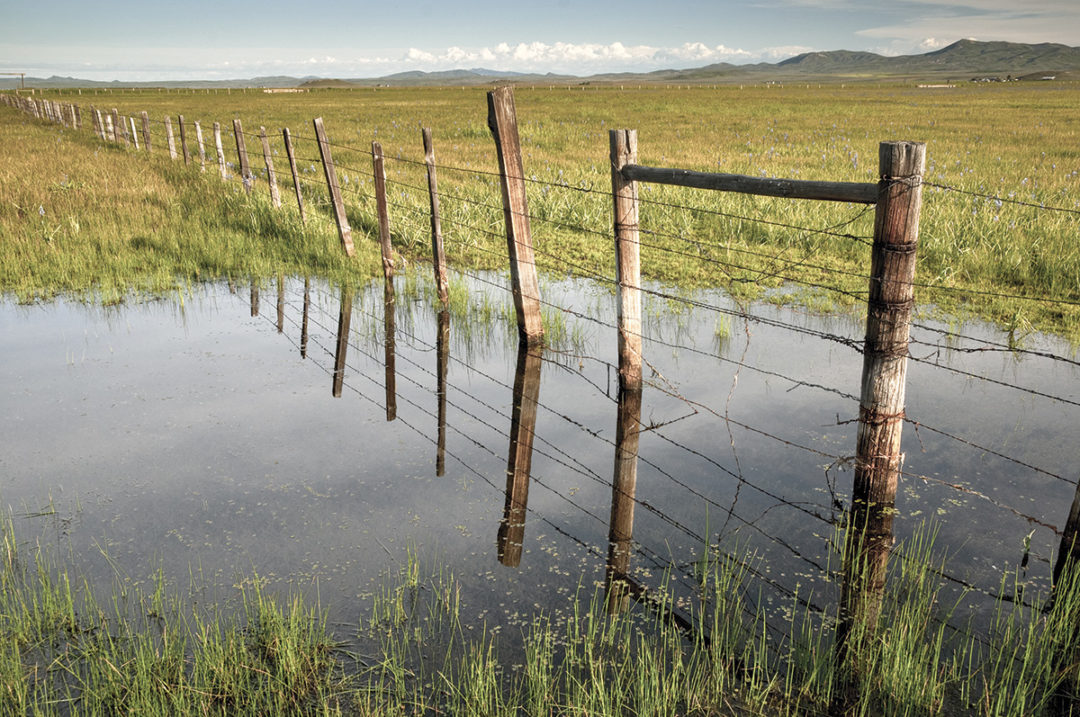Where’s the line? In the realm of property law and when delineating legal boundaries between neighboring properties, this is an important question that sometimes has a surprising answer.
For many properties in Idaho, particularly rural properties, fences and other physical markers are often believed to be the boundary between neighboring properties and are treated as such. But what happens when it is discovered that the legal description of the boundary line doesn’t match the location of a long-standing fence?
The state of Idaho adheres to a legal theory known as “boundary by agreement,” also sometimes referred to as “boundary by acquiescence,” under which, the legal boundary between neighboring properties can actually be relocated from its original legally described site. This article delves into some key aspects of boundary by agreement and explores some of the unique aspects of its application, implications and the broader legal landscape.
Understanding boundary by agreement
The doctrine of boundary by agreement is a well-established fixture of Idaho law, which has been implemented for over a century. At its core, boundary by agreement rests upon the principle that neighboring property owners may, through mutual agreement, establish the location of a boundary between their properties when the location of the true legal boundary is unknown.
A boundary by agreement claim has two elements: (1) there must be an uncertain or disputed boundary, and (2) a subsequent agreement fixing the boundary. These agreements may either be express agreements, in oral or written form, or implied as demonstrated through consistent conduct over time that displays a shared understanding of the agreed upon boundary, marked by some manner of physical feature. Most often, the physical demarcation is a fence. However, a fence is not necessary to support a claim for boundary by agreement, and other physical demarcations may be sufficient to support a claim. For example, longstanding farming lines between two neighboring properties have been recognized as sufficient to support a claim.
For the purpose of further exploring the applications of boundary by agreement, this article focuses on the most common application of the theory, which is boundary by implied agreement in relation to fences.
Establishing boundary by implied agreement
Most often, boundary disputes arise under the theory of boundary by implied agreement, particularly because there is no clearly documented agreement between the property owners. In the absence of an express written agreement, Idaho courts may consider factors such as long-standing acquiescence to a particular boundary, common understanding and consistent behavior by both parties to determine whether an implied agreement has been made.
The burden of proving the existence and terms of the implied agreement lies with the party seeking enforcement of the agreement. Importantly, it is the parties' conduct that is largely controlling in the court’s analysis and not necessarily the parties' subjective beliefs as to where the boundary may be located. Moreover, while there is no statutorily fixed timeline in which such conduct must occur, the Idaho Supreme Court has recently held that acquiescence must continue for a period of at least five years to support a claim.
Unique considerations
There are some additional unique considerations of boundary by agreement of which to be aware. For example, a fence must either have been constructed for the specific purpose of establishing a boundary or there must be no information as to the original purpose of the fence. If evidence can be produced to show that the fence was constructed for an alternative purpose, for example solely for the purpose of containing livestock with no evidence that it was meant to mark the boundary, then a boundary by implied agreement will fail. Conversely, in situations where there is absolutely no information as to the circumstances of the original construction of a fence, the law may presume that the fence was constructed for the purpose of establishing a boundary and that the boundary was uncertain.
Additionally, physical occupation or use of a piece of property is particularly relevant in determining whether an implied agreement has formed. For instance, grazing or farming up to a fence line but not beyond has been found to support a claim for boundary by implied agreement. Similarly, acquiescence to the placement of physical improvements such as trees, buildings, sprinkler lines, ponds, etc. within a disputed area will also support a claim.
The impact of boundary by agreement is not limited by the size of property affected. Impacts may range from minor adjustments, such as when a fence is merely feet off line from the legally described boundary, to significant shifts in boundary lines and acreage such as Flying Elk Inv. LLC v. Cornwall in which a boundary by agreement resulted in approximately 19 acres of land becoming part of a neighboring parcel. Lastly, for those who seek to attempt to unilaterally resolve a boundary conflict by relocating a fence prior to the dispute being resolved, an implied boundary by agreement can have significant consequences. In such circumstances, courts have found parties guilty of trespass when it is later held that a boundary by agreement does exist and, as a result, the relocated fence was placed on the neighbor’s property.
In summary, the theory of boundary by agreement is one that has a complex framework encompassing a balance of legal formalities and the lived experience of property owners and their neighbors. In navigating the nuances of this legal landscape, it is essential to underscore the practical implications of boundary by agreement, particularly in its application to fences. As the most common tangible markers of property boundaries, fences play a crucial role in the application of this legal framework and in resolution of boundary disputes. Idaho has no shortage of old fences, and as time marches on and properties continue to change hands, it should be expected that the application of boundary by agreement will remain alive and well as people will continue to inevitably ask, “Where’s the line?”






